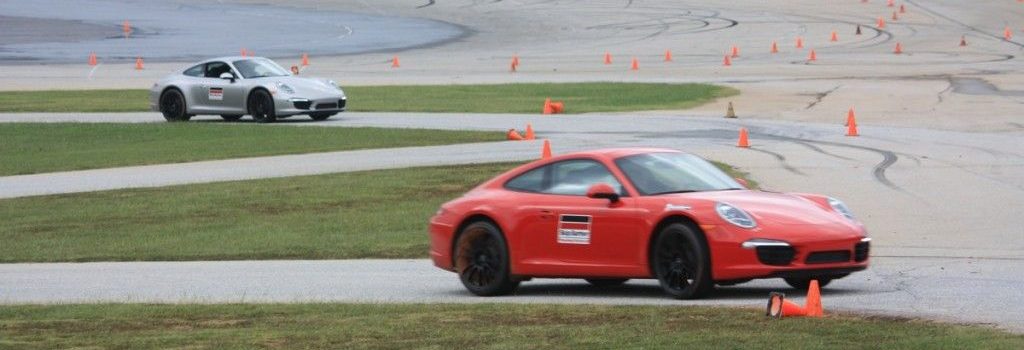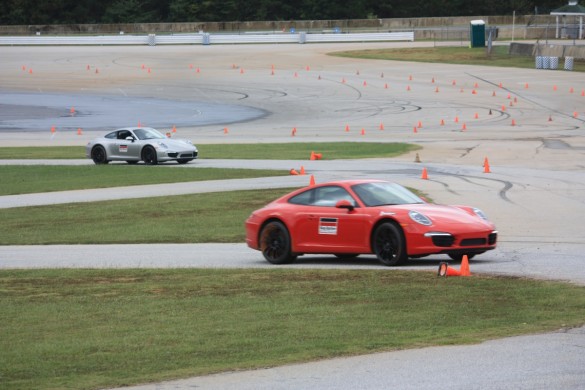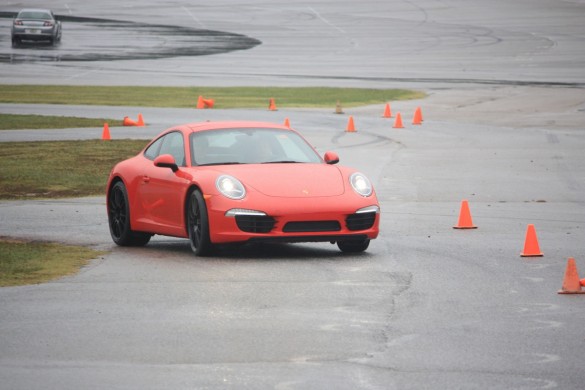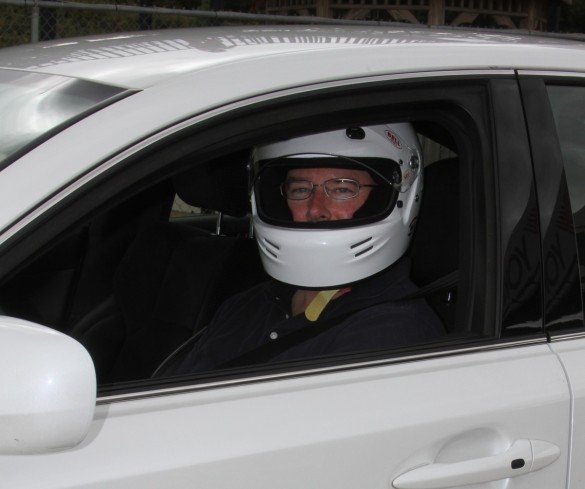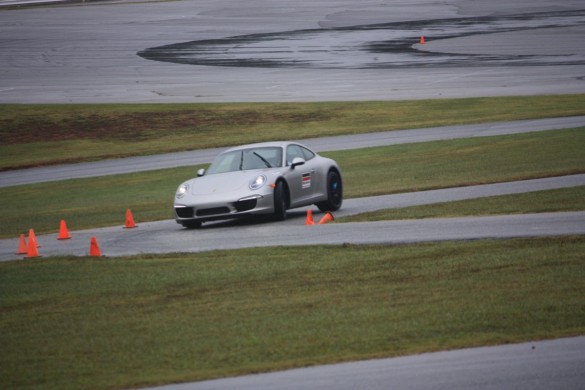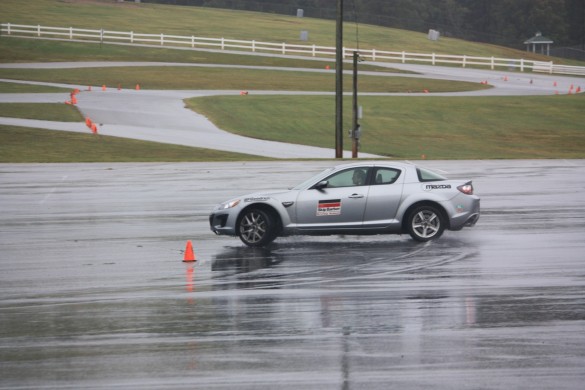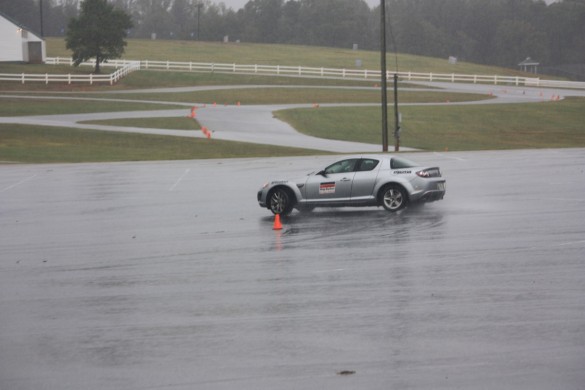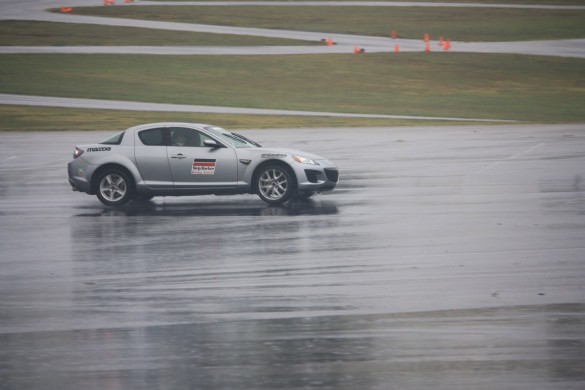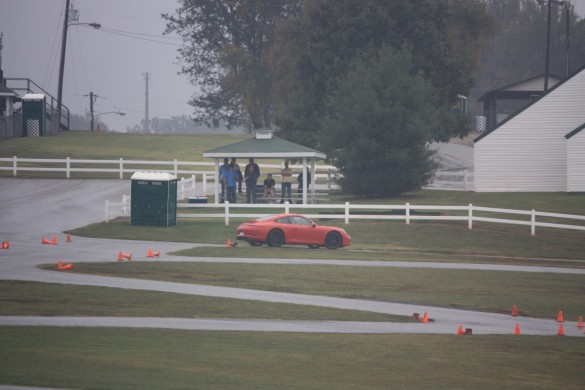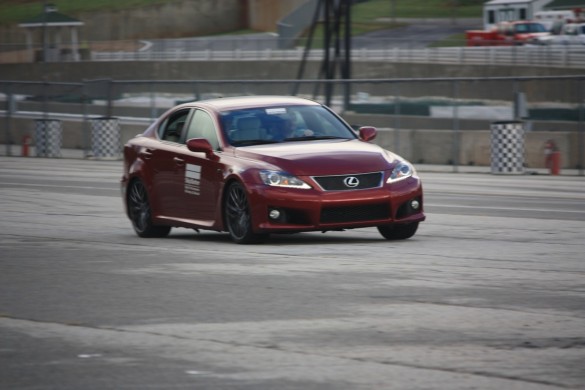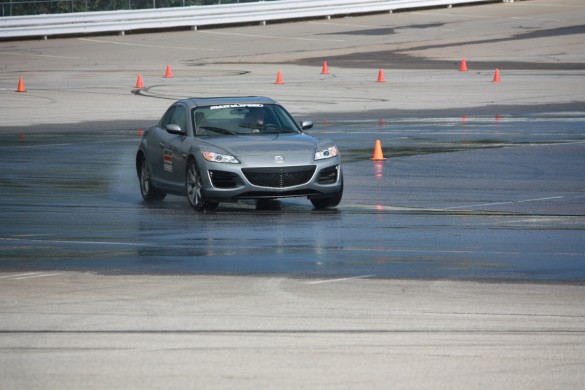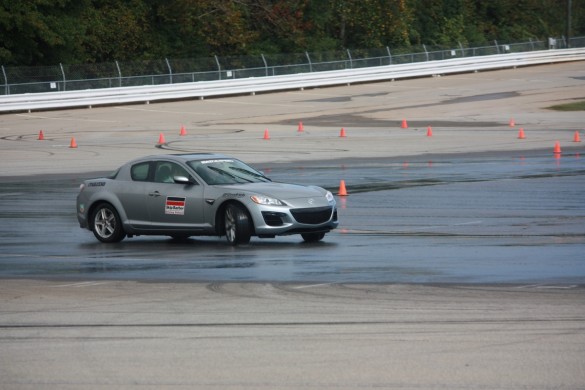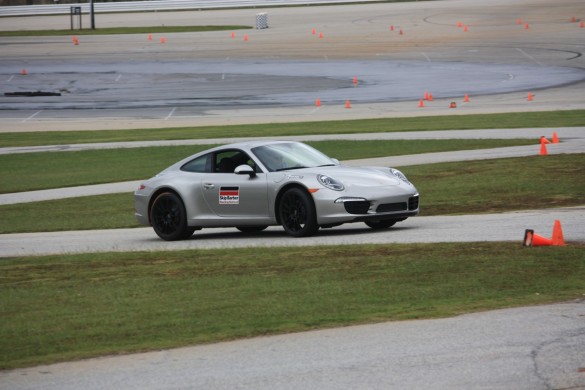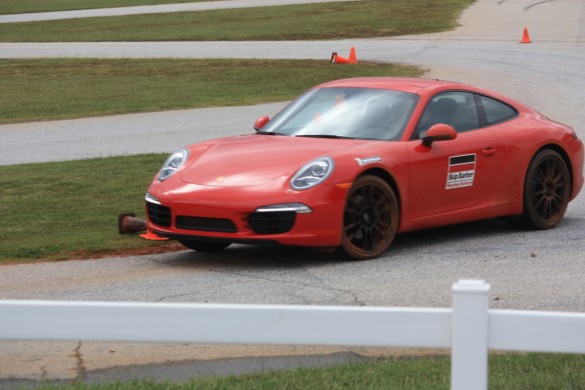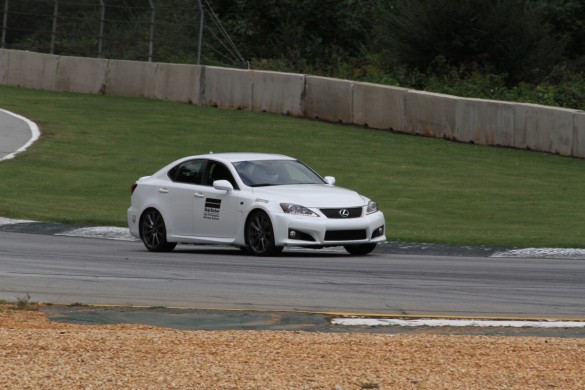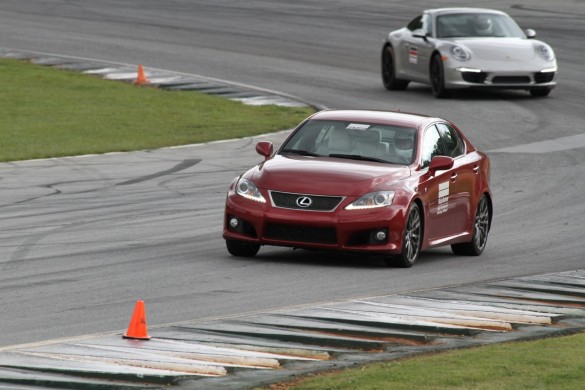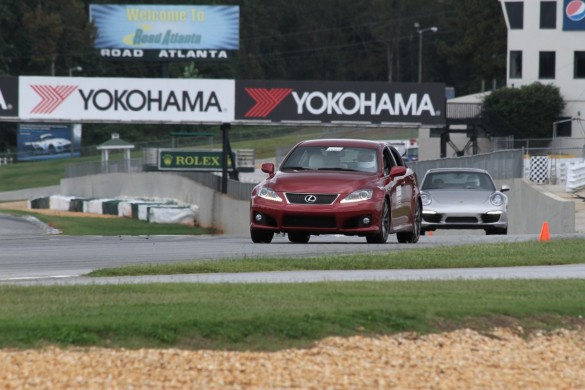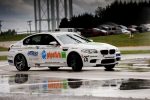When you were a kid, chances are good you wanted to grow up to be a fireman or a race car driver. Along the way, you realized that becoming a fireman took lots of dedication and hard work, while becoming a race car driver was simply a matter of hustling cars around a racetrack, quickly. Sure, it was dangerous, but it paid big money and offered a job filled with excitement.
Somewhere between that point and adulthood, reality set in. Chances are you abandoned your dream of being paid to race cars in favor of a career as an accountant, engineer, doctor, plumber or (in a worst-case scenario) automotive journalist. The truly lucky among you took a shot at the dream, only to find out that racing cars isn’t as easy as it looks, at least not at the level where you get paid to drive. The first step was likely a driver’s school, generally required before any sanctioning body will let you turn a wheel in anger.
One of the oldest and best known driving schools in the United States is run by the Skip Barber organization, and they’ll teach you anything you want to know, in as much detail as you’d care to learn it, for a price. If you’re new to driving, Skip Barber has a teen-centered program that will give you necessary survival skills you’d otherwise have to pick up on your own. If you want to drive the latest sports cars on a track, with instruction on how to do so properly, Barber’s got a course for that, too. If you still hold on to that dream of racing cars, the school can also set you up in a Mazda MX-5 Cup car or a Formula Mazda racer.
Like any seriously-focused instruction, a day or two at the Skip Barber school doesn’t come cheap. The two-day school I attended had a base price of $2,800, or $3,150 if you opt for the (highly recommended) vehicle liability insurance. While that sounds like a lot of cash to lay out, shop around for comparable instruction in any discipline, and you’ll soon realize that’s the going rate for high-quality instruction.
Make no mistake about it, Skip Barber schools are all about quality. Class sizes are relatively small – we had four instructors for 18 students – and each instructor is himself (or herself) an accomplished racer. They’re not teaching you the line around a track because they read about racing in a book – they’re teaching you the line around a track because they’ve driven it thousands of times and at some point in their careers, someone has handed them a check to drive a race car.
In addition to knowing how to drive, Skip Barber instructors know how to teach, too. Classroom time is kept to a minimum (to maximize driving time and student attention span), but the necessary essentials are covered in a thorough and engaging manner. Questions are encouraged, and answered in as much detail as a student wants.
While the format used by Skip Barber (classroom instruction, followed by car control exercises) is universal, the exercises used build on one another to lay a solid foundation of skills and boost driver confidence better than any other program I’ve ever attended. Secondarily, the exercises demonstrate just how capable modern sports cars (and modern high-performance tires) are, in a controlled and monitored environment.
Day one of my school was filled with torrential rain, which I saw as a plus. Bad driving and poorly balanced cars really stand out in the wet, so the opportunity to drive on a flooded skidpad, a soaking wet autocross track and a nearly-underwater emergency braking area seemed like more bang for the buck to me. While most of the other students in the two-day class saw things my way, we had our doubts that students lapping in open-cockpit formula cars (or MX-5 Cup racers) were quite as upbeat. At least we had the illusion of being (relatively) dry while we were driving.
After about 45 minutes of classroom instruction, we were shuttled over to an autocross track, when an instructor drove a few slow-paced laps behind the wheel of a new Porsche 911 Carrera, while we rode shotgun. Next, we changed seats, with the instruction to build speed with each successive lap. While none of us was attempting to set a record lap time in the wet in a brand-new Porsche, it was clear that our comfort level was rising with each corner.
Next up was a turn at the skid pad in a specially-modified Mazda RX-8. Set up specifically to oversteer, the relatively low-powered Mazda proved to be a handful on the glass-smooth surface of the skid pad, and inducing understeer proved to be difficult. Oversteer, however, was on tap for anyone with less than perfect car control skills, and we were soon impressed at how many complete rotations you could get from an RX-8 at relatively low speeds on the reduced-traction skidpad surface. The exercise was key to develop a feel for the car’s balance, which would prove crucial in the afternoon sessions.
Before lunch, we headed over to the emergency braking area, trading the the Mazda RX-8 for Lexus IS-F. The exercise sounded deceptively simple, but proved difficult to master: at a green light, the driver had only to stomp the throttle and point the car to a braking chute. When the light changed to red, the objective was to brake as hard as you could. Perhaps it was just perspective, but that red light seemed to take forever to illuminate, while the IS-F continued to build velocity. While the real purpose of the exercise was to get students used to transitioning from gas to brake, it also demonstrated just how good braking can be in a modern sport sedan, even in less-than-ideal conditions.
After lunch and a bit more classroom time to discuss cornering lines, we were back at the braking area, adding a new element to driving the IS-F. This time, we were to accelerate into a cone chute, lift off throttle to settle the car, do an emergency lane change and then brake with maximum effort. When we’d each had a few runs at a single lane change, the exercise switched up to change two lanes, making it that much more difficult to avoid hitting cones.
Following our session of terminating cones with extreme prejudice (though let the record state I’d killed but a single cone, in the first dual-lane change exercise), we were off to the skidpad, and back into the RX-8 for a horseshoe turn exercise. This time, the task was to accelerate hard into a braking zone on the skidpad, brake with intent (but not maximum effort) and then trail brake to the corner’s apex. Once at apex, we were to roll into the throttle while keeping the car pointed in the intended direction. Get on the gas too early, and oversteer was the order of the day. Turn in too sharply prior to the apex, and you were also countering oversteer. Get the corner just right, however, and you were met with just the right amount of rotation from the car’s rear. While car control was the lesson here, the second take away is that the RX-8 is an amazingly balanced car, so it’s time to shop for one on the used market before prices go up.
Finally, day one ended with a return to the autocross track, and another stint behind the wheel of the Porsche 911 Carrera. While it was easy to see our confidence (and speeds) build, it was abundantly clear that there’s no substitute for practice and proper lines around an autocross track. Even our best times wouldn’t have held up against a relatively proficient autocross driver.
The second day started out much like the first, with all 18 students back in the classroom for more instruction. While some of the content was refresher material from the first day, much of it related to the importance of keeping eyes up – that is, looking far enough ahead – on both the race track and the highway. As speed builds, this becomes exponentially more important.
Rather than turning us loose on Road Atlanta and hoping for the best, the next exercise for day two was a return to the emergency braking area, which had been set up into a slalom course. The goal was to negotiate the course in a Lexus IS-F as quickly as we could, launching as few cones as possible, but the real lesson was tied to the morning’s lecture. If you don’t look far enough ahead in a slalom, you’re bound to punt a cone, and the Skip Barber instructors can tell exactly where you’ve been looking by how (and where) you hit the cone.
When the instructors tired of running to retrieve scattered cones (and we’d been well-schooled on the importance of keeping eyes up), the class moved on to perhaps the most enjoyable exercise in the two-day school: an autocross that blended dry pavement with a wet skid pad, driven in the tail-happy Mazda RX-8. The course was ingenious in design, as it demonstrated the need to be gentle with both throttle and brake, as well as the effect of weight transfer (under acceleration or braking) on a car’s handling. While all of us looped the car at one point or another, after a few runs most students were able to rotate the car with a fair amount of control and turn ever-quicker laps. Of course we started pushing too hard then, demonstrating that there’s a fine line between “at the limit“ and “out of control.”
While most of us would have contentedly stayed at the the skidpad autocross for the rest of the day (yes, it really was that much fun), our instructors again forced us to drive the Porsche 911 Carrera on the autocross track. This time, however, there was a twist: we’d be driving solo, and our laps would be timed. Each of us would get six laps in one 911, followed by three laps in a second 911 (one was equipped with the PDK gearbox, while the second car had Porsche’s seven-speed manual transmission). At the end of the session, the fastest driver would earn bragging rights, even if there wasn’t a trophy or ribbon to accompany them.
I’d like to say I had the fastest time, but I didn’t. In the first session, I was second quickest, beaten by a fellow student by half a second. In the second session, I ran a warm up lap, followed by a faster second lap, but then lost count of the lap I was on and prepared to pull off. It really wouldn’t have mattered anyway, as I’d caught the car in front of me at the end of the second lap, so I wasn’t going to get a quicker time. In the end I had to settle for third fastest, but a podium position is still a podium position in my book.
Following lunch, it was back to the classroom for more instruction, most of which revolved around on-track procedure and etiquette. We collected helmets, then piled into vans for a turn-by-turn overview of Road Atlanta. Perhaps the coolest part about the track is its extreme elevation change and blind corners. The tire barriers and retaining walls are chock-full of paint scars from drivers who’d judged a turn wrong, and our instructors were determined to make sure none of us made the same mistake with the school’s cars.
After the turn-by-turn guidance, we split into our two groups for instructor paced laps. As three instructors led the first group around the course, the rest of us piled into the instructor’s cars – a specially prepared Mazdaspeed3 – to see what a lap at speed looked like. This proved to be very beneficial for those of us with some track experience, as it really gave us a sense of what to expect on track.

Lapping in the first session – note the suspension compression – image: Ben English, Helix In-Car Camera
When it was our turn to drive, we climbed into the Lexus IS-F and the Porsche 911 and followed the instructor out of pit lane. The pace of each run group was determined by the pace of the slowest driver, necessary so that everyone stays within his or her comfort zone. After two laps behind the instructor’s car, we gave way so the next student could learn the line around Road Atlanta.
When all was said and done, each of us had probably logged a dozen or so laps of the track at reasonable speed, and the seat time gave me better instruction than I’d ever received on a particular racetrack. In the event that I drive Road Atlanta again in the future, that level of detail alone made the class worth the price of admission to me.
At the end of the session, the instructors offered up rides in the Lexus IS-F to demonstrate what fast really looked like. Driving a paced lap gives you a sense of speed, but sitting in a car piloted by someone who races professionally gives you a completely different perspective; if you ever have the chance to lap a racetrack at the hands of a pro driver, do it.
So, at the end of the day, who is the Skip Barber two-day school best suited for? That’s a difficult question to answer, since it’s so encompassing. Drivers who’ve never been on a racetrack will likely benefit the most, while even those with track days and solo experience will find the class worthy of their time and money. If you’re going to drive competitive events, instruction from a school like Skip Barber may be required before you’re allowed to drive on track, and that alone may make the decision easy for you. Even if you’ll never put a wheel on a racetrack, the lessons delivered will make you a safer driver in the real world, and it’s awfully hard to put a price on that.
In the interest of full disclosure, Skip Barber waived the tuition fee, allowing me to attend the school for the purpose of writing this article. I paid for all other fees (travel, lodging and meals) associated with the class.
